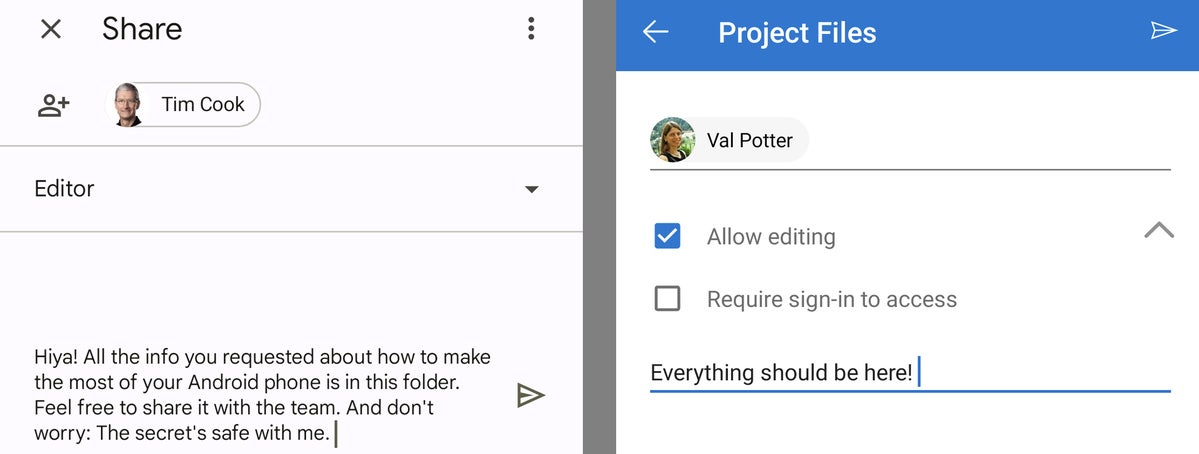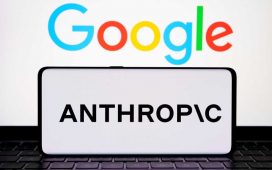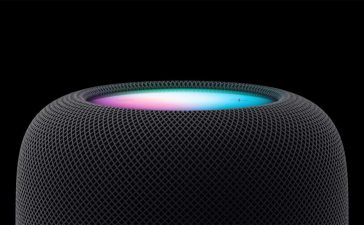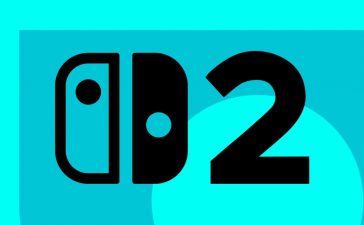Working together sure isn’t what it used to be.
These days, you don’t have to be in the same conference room — or, heck, even time zone — to work side by side with co-workers. Thanks to the variety of top-notch collaboration tools for our ever-connected devices, you can edit, organize, and communicate with anyone as if you were sitting right next to them, no matter where your corporeal form resides.
And you don’t even have to be perched at a computer for that to hold true: With the right set of Android apps, you can put the power of collaboration into your pocket — ready to jump into action anytime, anywhere.
These are the best Android apps for effective and efficient collaboration, broken down by what they’ll help you do.
Collaborate on documents
Google Docs or Microsoft Word
For years, Microsoft neglected Android, with app offerings ranging from “barely usable” to “entirely nonexistent.” Even as recently as 2017, when the company first started taking Office for Android seriously, the software’s real-time collaboration feature was vexingly clunky and inconsistent.
Today, all of that is history. Microsoft Word on Android is now a delight to use — and its multiuser editing system is smooth as can be, with real-time changes and inline commenting fully functional across multiple platforms.
That puts it neck and neck with Google, whose Docs word processor has always excelled at collaboration and continues to serve as a shining example of simple multiuser support.
 JR Raphael/IDG
JR Raphael/IDGInviting others for collaboration in Google Docs, left, and Microsoft Word, right.
The only real question is which app you prefer and which ecosystem makes more sense for your professional needs.
Docs is free for individual use, with company-wide plans starting at $72 per user per year. Word is similarly free for individual use, though with some significant restrictions in place — like read-only access on large-screen devices. Its fully featured plans are $70 a year and up for individuals or $12 per user per year and up for businesses, as part of Microsoft’s broader Microsoft 365 subscriptions.
Collaborate on emails
Spark
Email is an area where team collaboration is often needed — and yet the process has remained clunky, inefficient, and mostly unchanged over time. Think about it: When you need to get a co-worker’s input on an email you received or ask them to weigh in on a response, what do you do? Odds are, you forward the message to them in some capacity, either directly or via some secondary service, and then you exchange messages back and forth or work on edits in some other app until you get everything hammered out and ready to be pasted back over.
The company behind Spark thought there had to be a better way — and sure enough, they found it. The Spark app makes it simple as can be to chat with colleagues about an email right alongside that email (imagine that!). It does so by giving you a private, internal chat system that lives inside your inbox: You simply mention a team member in the chat area associated with any message, and you can then communicate with them about the email, exchange related files, assign tasks and due dates, and even work on a response together right then and there.
 Spark
SparkSpark makes it easy to chat with colleagues privately alongside an email, left, and collaborate on a response, right.
Spark’s Android app is nicely designed, too, and chock-full of useful features and customization options. The only real downside is that the service still isn’t available in a simple web-based form, though the company does now have native macOS and Windows apps available in addition to the mobile-specific versions.
Spark is free for individual use with limited collaboration features and an optional $60 a year premium upgrade. For the full team version, it costs $84 per user per year.
Collaborate on notes
Notion
When it comes to note collaboration, Notion is in a league of its own. The service provides a flexible canvas for virtually any kind of collective brainstorming and idea-storing imaginable, and it makes it especially easy to share notes with anyone and control exactly what level of access collaborators are granted — viewing, editing, or both editing and inviting other collaborators.
Notion allows multiple people to edit documents at the same time, in real time, and the app boasts a robust system for commenting and tagging other members of your team to assign specific items and interact all throughout your materials.
 JR Raphael/IDG
JR Raphael/IDGNotion has all the tools you need to create and organize notes and then collaborate securely and effectively within them.
The app empowers you to publish individual notes or entire collections to the web, too, and to allow anyone with the link to view them — even if they don’t have their own Notion account. You can set expiration dates for such links, too, to make them public only for a limited period of time, and you can decide whether you want any of your links to get indexed by search engines or remain in an “unlisted” sort of status.
Notion is free for individual use with an optional $48-a-year Pro upgrade that provides unlimited file uploads, unlimited guest access, and a 30-day editing history. Team-level access starts at $96 per user per year with a full set of collaboration and administrative controls.
Collaborate on projects
Trello
Need to work with others on organizing ideas and tracking progress on projects? Trello is the Android app for you.
Trello gives you a simple yet feature-packed framework for keeping projects in order: You just create a board for each project or area of interest, then create a series of lists within each board. The lists then get filled up with cards — individual items that contain text, files, checklists, images, and other such materials.
Every card contains its own comment stream for co-workers to leave thoughts and ideas, and each card — as well as the board on the whole — has a detailed activity log that lists all comments, additions, edits, and invites in a single place.
And while Notion also offers a broadly similar sort of organizational system, Trello’s board-based setup (known officially as a Kanban board) truly is beyond compare in terms of its power, flexibility, and user friendliness — both on the mobile front and on the desktop side of things as well.
 JR Raphael/IDG
JR Raphael/IDGTrello provides comment streams in every card and lets you add more collaborators with a couple quick taps.
Adding in new users is as easy as tapping the three-dot menu icon alongside your workspace name within the app’s main menu. There, you can invite anyone to view your board — with or without their own Trello account — and to join you in editing it, provided they have an account with the service (or are willing to sign up for one). You can also create a shareable link that’ll let anyone view your project or individual cards within your project without the need for an account or invite.
[ Trello tips for beginners | Advanced Trello tips | Trello productivity power-ups ]
All foundational features aside, Trello really shines with its spectacular integrated automation capabilities. The service’s Butler system lets you set up all sorts of advanced “if this, then that”-style rules for organizing your boards, updating cards, and communicating with team members whenever certain triggers occur. The triggers could be anything from the arrival of a particular day and time to the movement of a card from one list to another — or even the posting of a comment that includes a specific word or phrase.
Trello is free, with optional premium subscriptions starting at $60 per user per year that unlock additional features such as larger file attachments, management capabilities, and the ability to view your data in a variety of advanced views.
Chat with your team
Slack
Slack has become the de facto communication service for companies and teams — and for good reason: The app provides a powerful, reliable, and easy-to-use system for keeping in touch with colleagues in almost any way imaginable.
[ Slack tips, tricks, and hacks for power users ]
Slack gives you a combination of channels — subject-specific forums for specific members of your team — and private direct messaging capabilities to keep in touch with individual co-workers. It has customizable notifications so you can get alerted to activity as often as you like, with options for keyword-specific notifications as well as channel-wide activity alerts and pings for direct messages and mentions.
 JR Raphael/IDG
JR Raphael/IDGSlack excels at both group chats, left, and more personal types of communication, right.
With productivity-oriented integrations for everything ranging from Google Drive and Calendar to Salesforce, Zendesk, and Trello, Slack is designed to serve as the central nervous system for all of your work-oriented communication. It’s free with the most basic set of features (and some strict limits on both storage and integrations) or $87 per user per year and up for unlimited use along with advanced features such as guest access and impromptu audio calls.
Seamlessly share files
Dropbox, Google Drive, or Microsoft OneDrive
Slack, Trello, and Notion all include their own integrated file-sharing functions — but when collectively accessing files is a frequent part of your team’s workflow, having a dedicated common folder can make your life easier.
The good news: You’ve got plenty of solid options. Dropbox, Google Drive, and Microsoft OneDrive all have simple functions for sharing individual files or entire folders from their respective Android apps. You can create shareable links that’ll let anyone download the data in question — or you can share directly with other registered users to let them both access the data and upload their own additions. With the respective company’s software in place, you can even make a shared folder look and act like a regular local folder on your desktop computer for quick drag-and-drop transfers.
 JR Raphael/IDG
JR Raphael/IDGSharing a folder with someone in Google Drive, left, and Microsoft OneDrive, right.
Dropbox provides 2GB of space for free; Google Drive gives you 15GB of free storage that’s shared across all Google services (including Gmail and Google Photos); and OneDrive starts you off with 5GB of storage at its free level. All three services offer options to pay for additional space and other advanced features, with business-level plans available as well.
[ How to use Dropbox | Google Drive | Microsoft OneDrive for collaboration ]
Coordinate your calendars
Google Calendar or Microsoft Outlook
Google Calendar and Microsoft Outlook both do a commendable job of supporting shared calendars for colleague coordination. The main difference is each app’s associated ecosystem — and also the fact that Microsoft’s service comes bundled as part of its broader email application.
Basically, if you’re already using Microsoft apps — especially Outlook — then using Outlook for shared calendars likely makes sense. Otherwise, you’re probably better off going with Google’s standalone calendar service.
Both apps are free to use, with options to upgrade to enterprise-level plans. (See Google Workspace and Microsoft 365 business pricing.)
Work together on whiteboards
Microsoft Whiteboard
Clichéd as it may sound, sometimes a picture really is worth a thousand words. (Or at least a couple hundred.) The next time you need a shared visual surface for long-distance collaboration, Microsoft’s Whiteboard app is the tool to try.
Whiteboard, as its name suggests, puts a blank whiteboard surface on your screen. You send a private link to whomever you wish to invite, and — whether from a mobile device, a desktop web browser, or the native Windows app — they’ll be able to view and interact with your virtual board in real time.
 JR Raphael/IDG
JR Raphael/IDGMicrosoft Whiteboard has all sorts of tools for whiteboard-like collaboration.
Together, you can create diagrams, sketch out ideas, and annotate images. Whiteboard makes it easy to export and save your boards when you’re done, and it’s free to use (though any boards you create and save within it will count against your standard Microsoft 365 storage quota).
Share your smartphone’s screen
Google Meet
Maybe you need more than a whiteboard. Maybe you want a colleague to see exactly what you’re seeing on your own screen — something within an app, on the web, or whatever the case may be.
You’d be forgiven for failing to notice, but Google’s own free Meet videoconferencing app makes it incredibly easy to share your screen in real time with anyone else you invite into a meeting. Once you’re on a call, all you’ve gotta do to start a screen share is:
- Tap the three-dot menu icon in the lower-right corner of the screen.
- Look for the “Share screen” option in the panel that pops up.
- Tap that, then tap the “Start sharing” text to confirm that you want to proceed.
From that point onward, anyone else in your room will see a live view of your smartphone’s screen on their own device. Only you can control the phone, but any remote observers will witness everything you’re doing at every step of the way while still being able to chat with you at the same time.
 JR Raphael/IDG
JR Raphael/IDGGoogle Meet makes sharing a live view of your screen as simple as can be.
Ah…modern collaboration. With tools like these, you’ll never have to leave your favorite chair again.*
* But please do — at least once in a while. OK?
This story was originally published in January 2018 and most recently updated in January 2023.
Copyright © 2023 IDG Communications, Inc.












